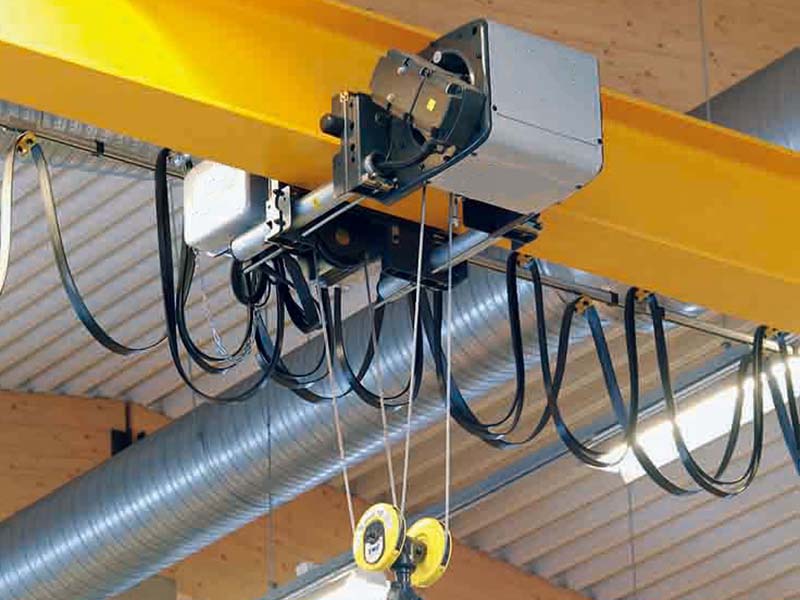Operation and maintenance procedures for electric single-girder cranes
The European standard single-girder bridge crane sales manufacturers provide you with the precautions and maintenance procedures before, during and after work for the operation and maintenance of no hidden dangers, hoping to help you.
before work
1. The electric single beam crane should be operated by a special person, and the operator should fully grasp the operation procedures without hidden dangers.
2. Check that the running mechanism of the track and the beam is clean, the mechanical gear is not damaged, and the limit device is complete and reliable. If there is any abnormality, it is not allowed to use.
3. Before normal use, a static load test should be carried out with a rated load of 125%, lifting about 100 mm from the ground, and a 10-minute static load test, and check whether it is normal.
4. Before normal use, repeated lifting and left-right movement experiments should be performed under no-load conditions to confirm that the mechanical transmission part, electrical part and connection part are normal and reliable. 5. Whether the wire rope is normally wound on the reel.
6. The operator must strictly check before opening the electric hoist to confirm that the rotating system is flexible and easy to use, and that various connecting fasteners are intact and well lubricated.
7. Before lifting heavy objects, the brakes, wire ropes and hooks should be fully inspected to confirm that they are reliable.
8. Pay attention to check that the gap between the trolley flange of the traveling mechanism and the edge of the I-beam should be 3-5 mm, otherwise it should be adjusted.
9. The operator should keep hands dry, without materials, keep the buttons dry, flexible and easy to use.
10. Check whether there are people and obstacles within the range of the electric hoist.
11. Before lifting heavy objects, the weight of the lifting heavy objects should be confirmed, and heavy objects that exceed the rated lifting weight are not allowed to be lifted.
at work
1. In use, it is forbidden to use it in an environment that is not allowed, and when the rated load and the rated closing times per hour (120 times) are exceeded.
2. It is not allowed to tilt and lift heavy objects and use it as a dragging tool.
3. When multiple cranes work in the same span, a distance of 1.5m must be maintained to prevent collision.
4. It is not allowed to press two flashlight door buttons that use the electric hoist to move in opposite directions at the same time.
5. The electric hoist must be inspected regularly by specialized personnel during use, and measures should be taken in time when faults are found, and they should be carefully recorded.
6. The braking motor should be adjusted so that the heavy object is suspended in the air for braking, and when the brake is lowered under a heavy load, the braking slippage should not exceed 80mm. The amount of braking slippage≤lifting speed/100(m).
7. The electric hoist must keep enough lubricating oil in use, and keep the lubricating oil clean, and should not contain impurities and dirt.
8. Hard burr wooden pieces should be used when oiling the wire rope. It is strictly forbidden to oil the working wire rope directly by hand.
After work
1. When the electric hoist is not working, it is not allowed to hang heavy objects in the air to prevent long-term deformation of the parts.
2. The hook should be raised more than two meters from the ground and the main power switch should be opened to ensure that there are no hidden dangers.
3. After every 200 hours of use, check the electrical installations, control systems and hooks for cracks or cold deformation.
4. After every 50 hours of use, check the damage of the wire rope drum and the rope guide and the tightening of the support bolts.
5. After each year, the use of the crane should be checked as a whole, especially the wear of wearing parts and transmission parts. If there is too much wear, it should be replaced immediately.

| Previous:What are the daily maintenance of gantry cranes? | next:The difference between bridge crane and gantry crane |
 Chinese
Chinese English
English


